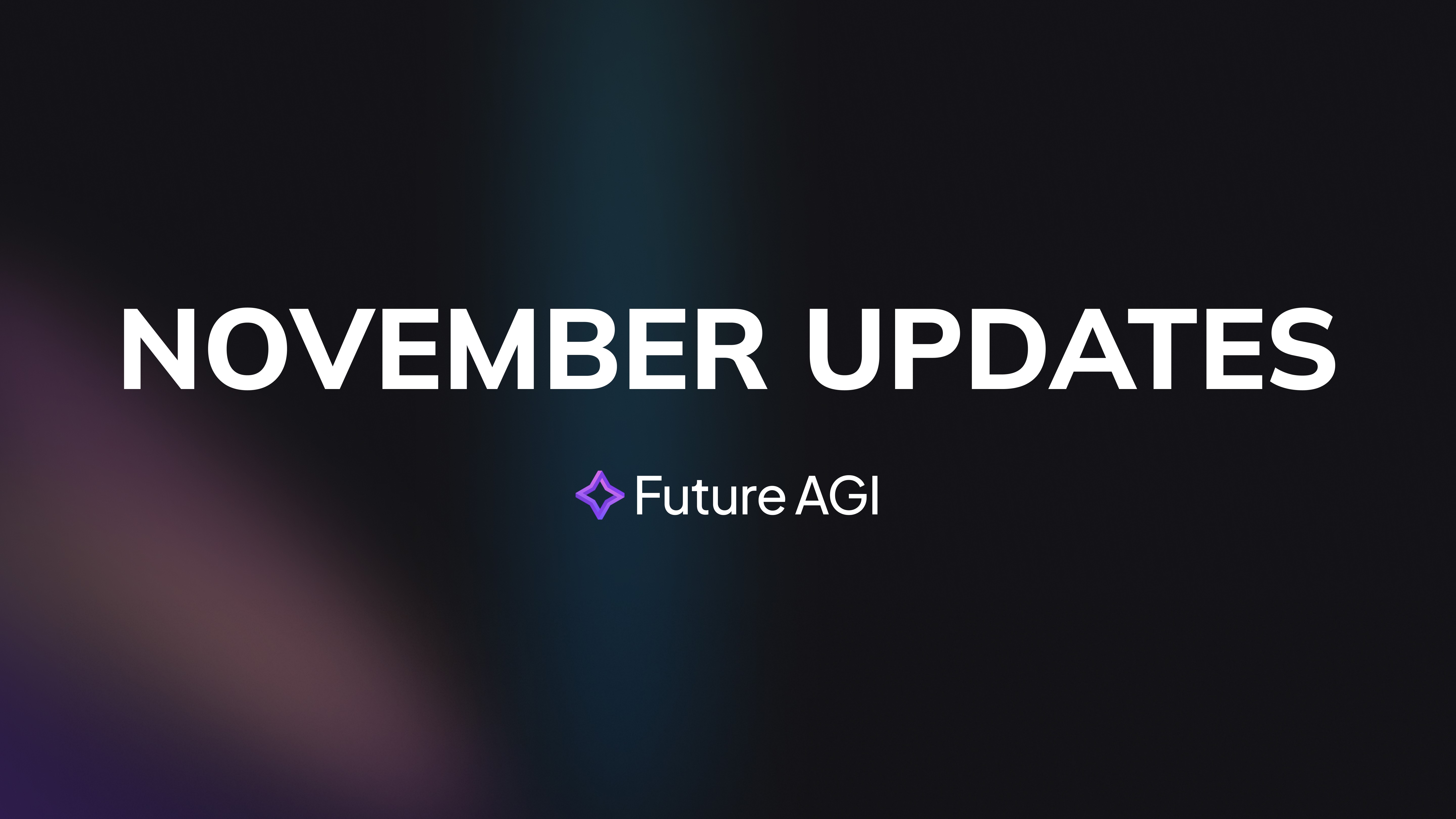Introduction
Generative AI has rapidly advanced, powering everything from sophisticated conversational agents to complex data-driven applications. However, as these models evolve, so does the complexity of their outputs. Errors—ranging from subtle inaccuracies to logical inconsistencies—can diminish trust in AI systems, especially when they are deployed in mission-critical areas such as healthcare, finance, and legal applications. To ensure reliability and effectiveness, automated error detection has become an essential tool in maintaining high-quality generative AI workflows.
This blog explores the significance of automated error detection in generative AI workflows, the benefits it brings, and how integrating AI-driven evaluation can optimize model outputs while enhancing the scalability of AI solutions.
The Importance of Error Detection in Generative AI
Errors in generative AI can manifest in several forms:
Factual inaccuracies that compromise the model’s credibility.
Logical inconsistencies that make the output nonsensical or contradictory.
Biases that can lead to unfair or harmful outcomes.
Formatting issues that disrupt the utility of AI-generated content.
Automated error detection helps address these issues, flagging potentially problematic outputs in real time and allowing teams to act swiftly before errors affect end-users. The need for reliable, scalable error detection becomes especially clear in high-stakes applications, where small errors can lead to significant consequences, whether it’s a chatbot giving incorrect medical advice or an AI-driven financial tool making a flawed recommendation.
The Challenges of Manual Error Detection
Historically, error detection has been a manual process. While human evaluators bring nuanced understanding to the table, this approach has its limitations:
Time-consuming: Reviewing large quantities of AI outputs is not feasible for fast-paced development environments.
Costly: Hiring human evaluators for every output can strain resources.
Inconsistent: Human judgments can vary due to fatigue, subjectivity, or lack of domain expertise.
As AI models scale and are integrated into more systems, manual error detection becomes a bottleneck. This calls for an efficient, automated solution that can continuously evaluate AI outputs with speed and accuracy.
How Automated Error Detection Works
Automated error detection leverages various techniques to identify flaws in AI-generated outputs. These methods can range from rule-based systems to advanced AI-driven models that evaluate the content for logical coherence, factual accuracy, and relevance. Here's how automation can address common issues:
1. Factual Inaccuracy Detection
AI models can cross-reference the generated content against trusted data sources, ensuring the information is accurate and up-to-date.
Example: Cross-checking market data in an AI-generated financial report to ensure no outdated or incorrect figures are presented.
2. Consistency and Coherence Analysis
Automated tools can assess whether the AI's output makes sense within its context. This is particularly useful for long-form content like technical documents or legal texts.
Example: Ensuring that a multi-paragraph legal explanation remains logically coherent throughout.
3. Bias Detection
By applying predefined fairness metrics, AI systems can evaluate whether the generated content is free from gender, racial, or other biases.
Example: Analyzing a job recruitment ad to ensure it doesn’t reflect gender or racial biases in the language.
4. Syntax and Formatting Validation
AI-powered analyzers or format-checking tools can ensure the output adheres to expected coding or writing standards.
Example: Validating that an AI-generated Python script adheres to best practices like PEP-8.
Benefits of Automated Error Detection
Automated error detection brings multiple advantages to generative AI workflows:
1. Scalability
Automation can process large volumes of data quickly, enabling teams to scale their AI systems without sacrificing quality.
Example: Evaluating thousands of AI-generated summaries for consistency in real time.
2. Cost Efficiency
By reducing the need for human evaluators, companies can focus their resources on other high-priority tasks, such as model refinement and deployment.
Example: Redirecting human resources to strategic tasks rather than error evaluation.
3. Improved Accuracy
AI-powered error detection systems are consistent and precise, minimizing the chances of overlooking subtle errors that might be missed by human evaluators.
Example: Automatically flagging factually incorrect claims that would be time-consuming for humans to spot.
4. Faster Iteration
Identifying and addressing errors quickly allows for rapid model improvements, reducing the overall development lifecycle.
Example: Real-time error detection helping teams fix and iterate on AI models faster, leading to quicker product updates.
5. Increased Trust and Reliability
By automatically flagging and correcting errors, organizations can maintain high-quality outputs, fostering greater user trust in their AI products.
Example: Providing end-users with more reliable results from AI-powered systems, increasing their confidence in the technology.
Existing Tools for Automated Error Detection
Several tools are available that integrate AI to automate error detection, each tailored to address specific types of issues in AI-generated outputs. Some popular tools include:
1. Rule-Based Systems
Rule-based systems can be set up to check for specific patterns or conditions in the output, such as grammatical errors, specific keyword usage, or correct syntax in code.
2. Knowledge Augmented Models
Leveraging external databases or APIs, AI models can cross-reference content to validate its accuracy and correctness, ensuring the generated output aligns with real-world data.
Example: Cross-checking AI-generated health information against trusted medical databases.
3. Model Evaluation Pipelines
Large language models (LLMs) themselves can be used to evaluate the outputs of other models, assessing coherence, relevance, and factuality.
Example: Using GPT-4 to evaluate the coherence of another LLM's generated output, as seen in some generative error detection systems.
4. Human-in-the-Loop (HITL) Systems
A hybrid approach combines automated tools with human oversight, ensuring that AI-generated errors are flagged and corrected while still leveraging human expertise for more nuanced situations.
Challenges of Automated Error Detection
While promising, automated error detection also comes with its limitations:
False Positives/Negatives: Automated tools may flag correct outputs as errors or miss subtle issues.
Domain-Specific Limitations: Generic evaluation pipelines may not capture nuanced errors in specialized fields like medicine or law.
Model Bias: AI-driven evaluators may inherit biases from their training data, complicating the detection process.
Addressing these challenges requires continuous refinement of error detection tools and integration with domain-specific expertise.
How Future AGI Enhances Error Detection
At Future AGI, we understand the complexities of detecting and resolving errors in generative AI workflows. None of the above methods provide an end-to-end solution for error detection and mitigation. Future AGI provides a proprietary closed loop solution for automated error detection which includes: error identification, context localization and analysis, and error mitigation. Our key features include:
1. AI-Driven Diagnostics: Contextual interpretation of errors using advanced algorithms.
2. Real-Time Adaptation: Instantly correct errors, minimizing downtime.
3. Scalable Design: Flexible across modalities - text, images.
Our advanced tools ensure outputs meet the highest standards of accuracy, reliability, and fairness. By leveraging techniques like Retriever-Augmented Generation (RAG) and model-powered evaluation, we provide scalable solutions for error detection that adapt to your needs, helping you maintain a high level of confidence in your AI-driven products. With Future AGI, organizations can accelerate their AI development cycles while ensuring the highest quality outputs for end-users.
References:
[1]https://raygun.com/blog/engineering-ai-error-resolution/
[2]https://www.zdnet.com/article/generative-ai-cant-find-its-own-errors-do-we-need-better-prompts/
[3]https://blog.testleaf.com/generative-ai-in-test-automation-how-does-it-impact-the-industry/
[4]https://www.lambdatest.com/blog/generative-ai-testing/
[6]https://www.functionize.com/automated-testing/generative-ai-in-software-testing
Note: ChatGPT was used for assistance in writing this blog post.












